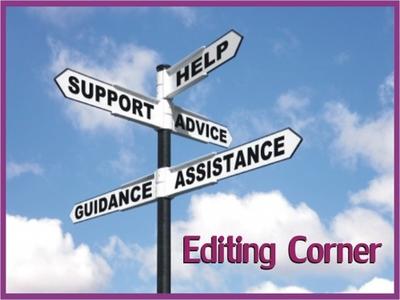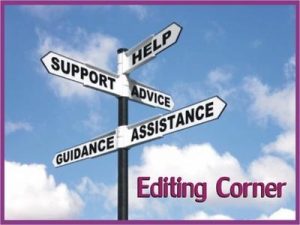Ian Smith, ERWA Flasher Gallery editor
I recently read an entertaining-enough adult romance story which provides a good example of the need to do some research, even in fiction.
No, I won’t name the book or author, as I don’t think that would be fair, but I did e-mail some constructive comments to the author.
Firstly, let me say I thought it was a perfectly reasonable adult romance, a variation on the “bad-start-to-happy-ever-after” theme. The main male character was British, the main female was American. They were both actors who met while working on a production in the UK, and a large proportion of the story took place in London. It had all the usual elements, a bad start on first meeting, then becoming friendlier, working through misunderstandings, nearly splitting up and then their happy ending. The steamy bits were nicely done, and came at a perfectly reasonable point in the development of their relationship.
But it struck me that the (American) author hadn’t thought about the setting. There were a number of things which made me think “not the Brtain I know”, and these rather irritated me. As the saying goes, the devil’s in the details.
The American character was described using what sounded like a modern smart phone at the same time that the British character was using a “brick-like” one. No matter how tempting it might be to make a joke about “backward Brits”, we’ve always had much the same range of mobile phones as the US. And they’ve NEVER been “cellular phones” in the UK, always “mobile phones”.
A passing reference was made to “foggy London streets”. London hasn’t been notably foggy for decades. The Clean Air Act 1956 was a response to London’s “Great Smog” of 1952, and fog is now rare in major cities. The popular idea of a foggy London in fiction probably dates back to the Sherlock Holmes stories, which were set in the late 19th and early 20th centuries.
At one point, the female character was looking at all the unfamiliar pound notes in her purse. Being pedantic, we’ve not had pound notes since 1988. If you want to bemuse a contemporary character with unfamiliar British money, we have dual-colour £1 and £2 coins, and have had plastic £5 notes since 2016 and plastic £10 notes since 2017. These are a bit annoying, as they slide past each other very readily. Paper pound notes are still legal tender in Scotland and the Isle of Man, but these wouldn’t be recognised in England and Wales. As in the US, card payments are about as common as cash ones.
The script used the word “chippie” as a slang term for a young woman. For most Brits, that’s where we buy our take-away fish and chips, but it’s also used as an informal reference to a carpenter. Female bus conductors and ticket collectors were sometimes referred to as “clippies” in the 1960’s and 1970’s, and I suppose that could easily be mispronounced.
The characters referred to each other as “dear” in conversations. We don’t generally do that, outside some regional and/or social groups, and many Brits would actually find it pretty patronising. We have quite a range of regional accents and dialects across the UK, and these can be a minefield to British writers, let alone ones from other countries. Quite a lot of people in Britain are puzzled by dialogue from time to time when watching episodes of “Shetland” or “Vera”, TV drama shows where the characters have strong regional accents.
When the two main characters were making friends, he took her to a pub and bought her a pint of Guinness, his favourite tipple. Guinness is certainly a popular drink in Britain, but I thought it highly unlikely that a British man would buy an American woman a pint of it by default, even if it’s his drink of choice. Maybe a half-pint, but he’d be far more likely to offer her wine or lager. She might taste his, out of curiosity, and probably pull a face. Most pubs will offer a range of beers, lagers and ciders, often ranging from mass-produced brews to craft beers. Women typically drink half-pints, but plenty now drink pints, and, if they try to match the guys drink-for-drink, probably spend a fair proportion of their evening visiting the ladies loo.
See how I snuck in some genuine British slang, “loo” for toilet? Sneaky, eh? It’s also commonly used in Australia and New Zealand, according to wikipedia.
The character also referred to Guinness being better direct from the brewery, which is widely accepted as a fact. But the brewery is in Dublin, the capital of Ireland, so not exactly convenient for anyone in London to pop out for a quick pint.
The male character was “throwing darts” in the pub with his mates. We “play darts”, not “throw darts”. Yes, we obviously throw darts, but that’s the verb, not the expression for the game.
He stopped off at a liqor store for some alcoholic drinks. We don’t have retail outlets called “liqor stores”, and rarely refer to it as “liquor” in everyday English. We usually buy alcoholic drinks from supermarkets or “off-licences”, shops which sell alcohol for consumption off the premises. The term relates to our licencing law for alcoholic drinks. Some off-licences are essentially supermarkets for wine.
He also ordered some food to take away from a pub. It’s pretty unusual for pubs to do take-away food, especially in towns and cities with lots of fast-food outlets. They often make a better profit on the drinks customers have with food they eat in the pub than on the food itself. If he wanted to pre-order take-away food, he’d contact a particular outlet. In reality, I guess he’d be likely to use one of the popular app-based services to order food to be delivered to his home.
There are some differences between UK and US English which can trip up writers from both sides of the Atlantic. For example, Brits would not say they were pushing things “off of” or taking things from “inside of” something. We push things off, or take things out. Little details, yes, but silly mistakes can make a reader pause and mentally leave the story for a second or two.
So, what can we do?
Research, that’s what!
Google really is the writer’s friend, so get stuck in and use it.
Social media is such an easy way for writers to ask their “friends” in other countries for information, facts or advice. Recruit a few as beta-readers and pay close attention to their feedback, especially about details. You could join an international constructive critiquing group for more private sharing of drafts and comments.
Watch British productions on TV or British films (movies in the US) for research purposes, and pay attention to the props, the locations, the way the characters talk. It isn’t always “accurate”, but it’s usually pretty reasonable. Read books or listen to audiobooks written by British authors set in modern-day Britain.
Want to look around the real, modern-day Britain from the comfort of your own home? Just use streetview.
If an American was reading a story I’d written in which an American character didn’t ring true for them, or I described something “American” which struck them as incongruous or even plain wrong, I’d appreciate being told about it, ideally politely.
How else can I learn to write better?







